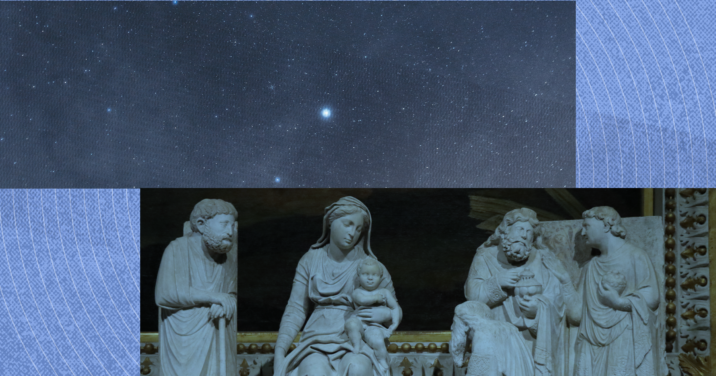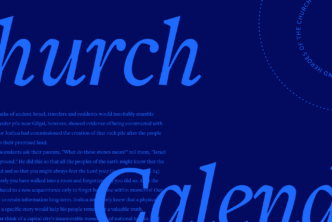Is Christmas a Christian holiday?
Yes. Yes, it is.
I’m being definitive up front because so many today are committed to the public and often gleeful discrediting of Christmas. Some such naysayers are devoutly Christian and seeking earnestly to resist pagan–Christian syncretism. Others are decidedly not Christian and relish the prospect of exposing secret paganism at the heart of a Christian celebration. Though exceptionally odd bedfellows, these eager debunkers share the same conviction: Christmas is a pagan holiday that’s been “baptized” into Christianity. I think they’re (sincerely) wrong.
Christmas and the Saturnalia
Let’s start with the date of Christ’s Nativity, popularly called Christmas (an abbreviated form of “Christ’s mass”). There is a widespread theory that says early Christian leaders simply adopted the Roman Saturnalia festival and refashioned it to be about Jesus’s birth. Supposedly, the story goes, after Emperor Aurelian established the feast of Sol Invictus (the Unconquered Sun) on December 25 in the imperial calendar (274 CE), Christians decided to make it their own, resulting in a perverse mishmash of paganism and Christianity.
The problem with this theory is that there’s little evidence for it. Certainly, December 25 isn’t documented as the traditional date for Jesus’s birth until 336 CE. But its formal citation in the Philocalian Calendar, a kind of Roman Christian almanac, strongly suggests that it had been part of the church’s customary observance well before then. Also, when fourth-century bishops like Ambrose (c. 339–397) wrote about the coincidence of Christ’s birth and the winter solstice, they treated it as evidence of God’s sovereign providence. Jesus was born during the season of pagan celebration, they claimed, to show his superiority over all rival gods. In other words, they believed God did it that way on purpose.
This is not to say Christians never assimilated pagan holidays. We know such was the practice under the leadership of Gregory the Great (c. 540–604). He instructed missionaries to today’s Great Britain to repurpose pagan temples and festivals for Christian ends. But that practice comes much later in the church’s story. As best we can tell, the tradition of celebrating Christ’s Nativity on December 25 was established sometime in the third century, likely before Christianity became the religion of the Roman Empire, and long before any Christians adopted the strategy of assimilating pagan holidays.
Christmas and the rabbinic tradition
How, then, did the early church settle on December 25 in the first place? The most likely explanation has to do with Jewish rabbinic tradition. Rabbinic scholars taught that the Hebrew patriarchs were born and died on the same days—a sign of completion or wholeness of life before God. So, Jesus Christ, the perfect fulfillment of Israel’s hopes, was thought to have had a fully symmetrical life, too. Based on the dating of Passover, Jesus was thought to be crucified on March 25. It was concluded, then, that he was conceived on the same day. And March 25 happened to be the date rabbinic scholars also said the world was created, a fitting coincidence for early Christian thinkers proclaiming Jesus as Lord. What comes exactly nine months after March 25 on the Julian calendar? That’s right: December 25.
Here’s what Augustine (c. 354–430) said on the subject:
For [Jesus] is believed to have been conceived on the 25th of March, upon which day also he suffered; so the womb of the Virgin, in which he was conceived, where no one of mortals was begotten, corresponds to the new grave in which he was buried, wherein was never man laid, neither before him nor since. But he was born, according to tradition, upon December the 25th. (On the Trinity, IV.5.9)
The Council of Tours
When the Council of Tours met in 567 CE, about 130 years after Augustine, they officially affirmed the twelve days from December 25 through January 6 (the feast of the Epiphany) to be observed as a sacred and festive season.1
Within the twelve days of Christmas, later called Christmastide, the church observed other commemorations too: St. Stephen’s Day, the faithful deacon and first martyr (December 26); the Feast of John the Apostle, imprisoned for his faithfulness to Christ even in old age (December 27); the Holy Innocents, slaughtered by Herod in Bethlehem (December 28); and the circumcision of Jesus on the eighth day following his birth (January 1).
The point of Christmas
Can we know for sure that Jesus was born on December 25? No. And some have argued from details in the Nativity stories that it’s unlikely for other reasons. Nevertheless, not knowing the precise date of some event does not rule out the possibility of remembering and celebrating it. The point is not the exact date of Jesus’s birth but the fact that he was born. God, the Creator of the cosmos, came amongst us in a first-century Palestinian Jew, Jesus of Nazareth: conceived by the Holy Spirit and born of the Virgin Mary.
For God was pleased to have all his fullness dwell in him, and through him to reconcile to himself all things, whether things on earth or things in heaven, by making peace through his blood, shed on the cross. (Col 1:19–20)
Certainly, no one must commemorate the birth of our Savior and Lord. But we get to if we want to. And that’s what most Christians and churches have been doing on December 25, the feast of the Nativity of our Lord, for about 1500 years.
A Christmas story
If that’s true, though, why did Christmas become controversial even among Christians?
The tale is long and meandering, but the basic plot goes like this: As Christianity spread, eventually becoming the established religion of European empires, its observances were tightly intertwined with agricultural rhythms. For many people, the winter month of December was a time of relative rest after the intense labor of harvest in autumn. During winter they butchered livestock and laid off seasonal workers. Common folk still had plenty to do: weaving, repairing tools, logging, and more. But idleness still threatened. With meat, ale, and free time in more plentiful supply, many observed the holiday of Christmastide with drinking, feasting, and troublemaking.
In the medieval period, especially, Christmas became associated with indulgence, carousing, and the flouting of social conventions. Serfs were expected to “gift” their lords extra bread, eggs, and chickens. But lords were also supposed to give their serfs a Christmas bonus of food, drink, clothes, and firewood—in addition to twelve days off and, for some, invitations to sumptuous feasts at the manor. Eager carolers, not welcome to bring their bawdy singing to church, often took to the streets to serenade their neighbors and dance house-to-house. Such self-appointed entertainers often demanded some kind of payment with veiled—and sometimes not-so-veiled—threats if they weren’t satisfied. You can hear echoes of this tradition in “We Wish You a Merry Christmas”: “O, bring us some figgy pudding, And bring it right here! / We won’t go until we get some, So bring it right here!”
Interestingly, it’s during the medieval period, too, that more than a few Christmas traditions first emerged. For instance, most historians trace the Christmas tree to public plays that were held to teach biblical stories to illiterate laity. The Paradise Play, which recounted the story of Adam and Eve’s creation and fall, featured a large evergreen decorated with red apples (for the fall) and round pastry wafers for the Eucharist (for the body of Christ that saves us). Over time, the public display of the paradise tree shifted to the interior of churches and of aristocratic homes; and then the tradition migrated to North America with German and Scandinavian immigrants. Mass media then popularized the decoration so much that, by the turn of the twentieth century, the display of decorated evergreens was considered essential to Christmas celebrations.
Still, the debauched excess of medieval Christmastide was a scandal to many clergy during and after the Protestant Reformation. The English cleric Hugh Latimer denounced it, saying, “Men dishonor Christ more in the twelve days of Christmas than in all the twelve months besides.”2 Perhaps it comes as no surprise, then, that the Puritan party of the Church of England published tracts against Christmas and eventually banned it entirely when then settled in New England. And it is in these Puritan tracts and preaching that we encounter explicitly Christian claims that Christmas is, in fact, refashioned paganism. So, twenty-first century Christians are by no means the first to wonder if they have any business observing Christmas at all!
Modern Christmas
Over time, major socio-economic changes like the industrial revolution led to major changes in how Christmas was observed in North America and Europe. For many, the holiday went from being primarily public and communal to private and home-focused. Simultaneously, the emergence of the middle class and the mass production of consumer goods moved the Christmas gift-giving ritual into the household. Rather than parades of drunken carolers and raucous community parties, Christmas came to be epitomized by a middle-class, Anglo-Saxon family gathered around a soft-lit decorated tree exchanging store-bought gifts. And this image remains at the center of the Western imagination about Christmas today.
Christmas for Christians
Given this (admittedly very abbreviated) history, one might be wondering if I still want to claim Christmas is truly a Christian holiday. But I do! I have a few reasons for this.
First, just because something isn’t found in the Bible doesn’t mean it isn’t Christian. Since its earliest days, the church has formulated and passed on many doctrines, practices, and customs that are extrapolations of biblical teaching rather than explicit instruction or commands. Such things that the Christian community has developed over time are often called tradition.
Consider, for instance, the evangelical Protestant tradition of daily “quiet time” or private Bible reading. None of the biblical authors, who lived long before the printing press and widespread literacy, could have conceived of a world in which individuals would own personal copies of the Scriptures to read on their own. But now that we do live in such a world, the biblical admonitions to love, attend to, and obey God’s Word makes daily “quiet time” or private Bible reading an appropriately Christian practice. No one must do it; but anyone can do it if they so choose. And there are many benefits to reap as a result.
I think the same can be said of observing special days and seasons of the church year. Certainly, where the Bible directly speaks one way and tradition goes another, then the Bible wins (at least for Protestants). But observing Christmastide is not an instance in which we are dealing with such a clear contradiction. Viewed in historical and liturgical context, Christmas and its twelve days are not pagan in origin or meaning. Like the church calendar as a whole, Christmastide was established to help Christians living in the already-not-yet of God’s kingdom to re-orient themselves in the grand story of God, with the life, death, and resurrection of Christ at the center.
Furthermore, while the majority of today’s Christians are gentiles, the roots of our faith are Jewish. We have been “grafted into” the people of God, Paul says (Rom 11:17). Among the many things Jesus and his apostles received from their Jewish heritage was the observance of the Jewish calendar. Marking time in this way was considered an essential part of remembering their covenant with God and passing on their faith to the next generation. Consider the words of God to Moses regarding the Passover:
Celebrate the Festival of Unleavened Bread, because it was on this very day that I brought your divisions out of Egypt. Celebrate this day as a lasting ordinance for the generations to come. (Exod 12:14)
It is within this pre-existing Jewish pattern of observing days of remembrance that Christians began to mark time with their own holy days, beginning with the resurrection of Christ. The earliest commemorations of the church year, then, were ways to keep time as an alternative—not a capitulation—to the pagan calendar being followed all around them. With some thoughtfulness, intentionality, and communal wisdom, the same can be true for Christians and churches today.
If Christmas can properly be called a Christian holiday, does that then mean Christians are bound to observe it? No, as I hope I’ve made clear. Like the church calendar as a whole and its many other associated traditions, Christians get to observe Christmas, but no one must do so. Yet those who desire to reclaim Christmastide as a decidedly Christian observance have ample historical, liturgical, and theological reasons and resources for doing so.
Nevertheless, those whose consciences resist participating in a season that has become so commercialized and associated with overindulgence should by all means abstain. And not every tradition associated with Christmas ought to be repeated, either. We need the Holy Spirit’s wisdom and discernment, to be sure, especially in societies deeply shaped by consumer capitalism. The truth is, Christians of every time and place ought always to be asking what faithfulness to the gospel requires of us—for Christmas, yes, but also for every day thereafter.
Related articles
- Christmas Is about the Advent of God! But What Type of God?
- 10 Unexpected Christmas Sermon Texts Worth Using-and More
- 19 Advent Devotionals & Books to Celebrate Christ This Season
- What—and When—Are the 12 Days of Christmas?
Resources by Emily Hunter McGowin
- Mary Ellen Hynes, Companion to the Calendar: A Guide to the Saints and Mysteries of the Christian Calendar (Chicago, IL: Liturgy Training Publications, 1993), 8.
- Stephen Nissenbaum, The Battle for Christmas: A Social and Cultural History of Our Most Cherished Holiday (New York: Vintage Books, 1997), 7.







